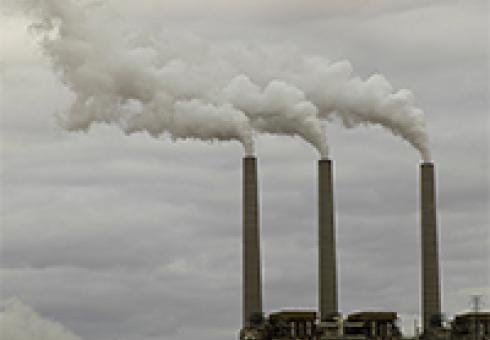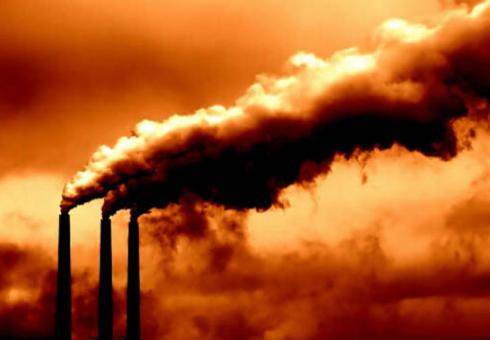News + Media
The Advanced Global Atmospheric Gases Experiment (AGAGE), meets this week in Boston for their biannual meeting and to celebrate their 35th anniversary.
Peter Dizikes, MIT News Office
If you have stopped at a gas station recently, there is a good chance your auto has consumed fuel with ethanol blended into it. Yet the price of gasoline is not substantially affected by the volume of its ethanol content, according to a paper co-authored by an MIT economist. The study seeks to rebut the claim, broadly aired over the past couple of years, that widespread use of ethanol has reduced the wholesale cost of gasoline by $0.89 to $1.09 per gallon.
Whatever the benefits or drawbacks of ethanol, MIT’s Christopher Knittel says, price issues are not among them right now.
“The point of our paper is not to say that ethanol doesn’t have a place in the marketplace, but it’s more that the facts should drive this discussion,” says Knittel, the William Barton Rogers Professor of Energy and a professor of applied economics at the MIT Sloan School of Management.
The 10 percent solution?
The vast majority of ethanol sold in the United States is made from corn. It now constitutes 10 percent of U.S. gasoline, up from 3 percent in 2003.
It is another matter, however, whether that increase in ethanol content produces serious savings at the pump, as some claim. Knittel and his co-author, economist Aaron Smith of the University of California at Davis, contest such an assertion in their paper, which is forthcoming inThe Energy Journal, a peer-reviewed publication in the field.
The claim that ethanol lowers prices derives from a previous study on the issue, which Knittel and Smith believe is problematic. That prior work involves what energy economists call the “crack ratio,” which is effectively the price of gasoline divided by the price of oil.
The crack ratio is something energy analysts can use to understand the relative value of gasoline compared to oil: The higher the crack ratio, the more expensive gasoline is in relative terms. If ethanol were a notably cheap component of gasoline production, its increasing presence in the fuel mix might reveal itself in the form of a decreasing crack ratio.
So while gasoline is made primarily from oil, there are other elements that figure into the cost of refining gasoline. Thus if oil prices double, Knittel points out, gasoline prices do not necessarily double. But in general, when oil prices — as the denominator of this fraction — go up, the crack ratio itself falls.
The previous work evaluated time periods when oil prices rose, and the percentage of ethanol in gasoline also rose.
But Knittel and Smith assert that the increased proportion of ethanol in gasoline merely correlated with the declining crack ratio, and did not contribute to it in any causal sense. Instead, they think that changing oil prices drove the change in the crack ratio, and that when those prices are accounted for, the apparent effect of ethanol “simply goes away,” as Knittel says.
To further illustrate that the previous study was touting a correlation, not a causal relationship, Knittel and Smith conducted what are known in economics literature as “antitests” of that study’s model. By inserting unconnected dependent variables into the model, they found that the model also produced a strong correlation between ethanol content in gasoline and, for instance, U.S. employment figures — although the latter are clearly unrelated to the composition of gasoline.
The previous work also claimed that if ethanol production came to an immediate halt, gasoline prices would rise by 41 to 92 percent. But Knittel does not think that estimate would bear out in such a scenario.
“In the very short run, if ethanol vanished tomorrow, we would be scrambling to find fuel to cover that for a week, or less than a month,” Knittel says. “But certainly within a month, increases in imports would relax or reduce that price impact.”
Informing the debate
The differing assessments of ethanol’s impact have garnered notice among economists and energy policy analysts. Scott Irwin, an economist at the University of Illinois at Urbana-Champaign who has read the paper, calls it a “convincing and compelling” rebuttal to the idea that expanding ethanol content in gasoline drastically lowers prices.
“The paper dispensed once and for all with that conclusion,” Irwin says. Still, he adds, there remains an open debate about the marginal effects of ethanol content in gasoline, and more empirical work on the subject would be useful.
“A case can be made that it can be a positive few cents,” Irwin says, adding that “reasonable arguments can be made on either side of zero” regarding ethanol’s price impact. In either case, Irwin says, his view is that the effect is currently a small one.
Knittel has posted, on his MIT Sloan web page, a multipart exchange between himself and Dermot Hayes, an Iowa State University economist who is a co-author of the prior work. After an initial finding that ethanol reduced gasoline prices by $0.25 per gallon, Hayes and a co-author produced follow-up studies, examining about a decade after 2000, and arrived at the figures of $0.89 and $1.09 per gallon, which gained wider public traction.
Knittel acknowledges that policy decisions about gasoline production are driven by a complex series of political factors, and says his study is not intended to directly convey any policy preferences on his part. Still, he suggests that even ethanol backers in policy debates have reason to keep examining its value.
“Making claims about the benefits of ethanol that are overblown is only going to set up policymakers for disappointment,” Knittel says.
To better understand Earth's climate, we seek theories that predict observations regionally and globally, from human to geologic time scales. But what are the relevant observations? And how do we construct useful and realistic theories? We grapple with these questions by creating a mathematical observatory and focusing its telescopes on Arctic ice and climate.
The John Carlson Lecture communicates exciting new results in climate science to the general public.
Peter Dizikes, MIT News Office
The structure of the auditing business appears problematic: Typically, major companies pay auditors to examine their books under the so-called “third-party” audit system. But when an auditing firm’s revenues come directly from its clients, the auditors have an incentive not to deliver bad news to them.
So: Does this arrangement affect the actual performance of auditors?
In an eye-opening experiment involving roughly 500 industrial plants in the state of Gujarat, in western India, changing the auditing system has indeed produced dramatically different outcomes — reducing pollution, and more generally calling into question the whole practice of letting firms pay the auditors who scrutinize them.
“There is a fundamental conflict of interest in the way auditing markets are set up around the world,” says MIT economist Michael Greenstone, one of the co-authors of the study, whose findings are published today in the Quarterly Journal of Economics. “We suggested some reforms to remove the conflict of interest, officials in Gujarat implemented them, and it produced notable results.”
The two-year experiment was conducted by MIT and Harvard University researchers along with the Gujarat Pollution Control Board (GPCB). It found that randomly assigning auditors to plants, paying auditors from central funds, double-checking their work, and rewarding the auditors for accuracy had large effects. Among other things, the project revealed that 59 percent of the plants were actually violating India’s laws on particulate emissions, but only 7 percent of the plants were cited for this offense when standard audits were used.
Across all types of pollutants, 29 percent of audits, using the standard practice, wrongly reported that emissions were below legal levels.
The study also produced real-world effects: The state used the information to enforce its pollution laws, and within six months, air and water pollution from the plants receiving the new form of audit were significantly lower than at plants assessed using the traditional method.
The co-authors of the paper are Greenstone, the 3M Professor of Environmental Economics at MIT; Esther Duflo, the Abdul Latif Jameel Professor of Poverty Alleviation and Development Economics at MIT; Rohini Pande, a professor of public policy at the Harvard Kennedy School; and Nicholas Ryan PhD ’12, now a visiting postdoc at Harvard.
The power of random assignment
The experiment involved 473 industrial plants in two parts of Gujarat, which has a large manufacturing industry. Since 1996 the GPCB has used the third-party audit system, in which auditors check air and water pollution levels three times annually, then submit a yearly report to the GPCB.
To conduct the study, 233 of the plants tried a new arrangement: Instead of auditors being hired by the companies running the power plants, the GPCB randomly assigned them to plants in this group. The auditors were paid fixed fees from a pool of money; 20 percent of their audits were randomly chosen for re-examination. Finally, the auditors received incentive payments for accurate reports.
In comparing the 233 plants using the new method with the 240 using the standard practice, the researchers uncovered that almost 75 percent of traditional audits reported particulate-matter emissions just below the legal limit; using the randomized method, only 19 percent of plants fell in that narrow band.
All told, across several different air- and water-pollution measures, inaccurate reports of plants complying with the law dropped by about 80 percent when the randomized method was employed.
The researchers emphasize that the experiment enabled the real-world follow-up to occur.
“The ultimate hope with the experiment was definitely to see pollution at the firm level drop,” Duflo says. The state’s enforcement was effective, as Pande explains, partly because “it becomes cheaper for some of the more egregious pollution violators to reduce pollution levels than to attempt to persuade auditors to falsify reports.”
According to Ryan, the Gujarat case also dispels myths about the difficulty of enforcing laws, since the experiment “shows the government has credibility and will.”
But how general is the finding?
In the paper, the authors broaden their critique of the audit system, referring to standard corporate financial reports and the global debt-rating system as other areas where auditors have skewed auditing incentives. Still, it is an open question how broadly the current study’s findings can be generalized.
“It would be a mistake to assume that quarterly financial reports for public companies in the U.S. are exactly the same as pollution reports in Gujarat, India,” Greenstone acknowledges. “But one thing I do know is that these markets were all set up with an obvious fundamental flaw — they all have the feature that the auditors are paid by the firms who have a stake in the outcome of the audit.”
Some scholars of finance say the study deserves wide dissemination.
“This is a wonderful paper,” says Andrew Metrick, a professor and deputy dean at the Yale School of Management. “It is a very strong piece of evidence that, in the context they studied, random assignment produces unbiased results. And I think it’s broadly applicable.”
Indeed, Metrick says he may make the paper required reading in a new program Yale established this year that provides research and training for financial regulators from around the world.
To be sure, many large corporations have complicated operations that cannot be audited in the manner of emissions; in those cases, a counterargument goes, retaining the same auditor who knows the firm well may be a better practice. But Metrick suggests that in such cases, auditors could be randomly assigned to firms for, say, five-year periods. At a minimum, he notes, the Dodd-Frank law on financial regulation mandates further study of these issues.
Greenstone also says he hopes the current finding will spur related experiments, and gain notice among regulators and policymakers.
“No one has really had the political will to do something about this,” Greenstone says. “Now we have some evidence.”
The study was funded by the Center for Energy and Environmental Policy Research, the Harvard Environmental Economics Program, the International Growth Centre, the International Initiative for Impact Evaluation, the National Science Foundation and the Sustainability Science Program at Harvard.
International leaders have gathered this week in Kumamoto, Japan to sign a landmark treaty to curb the use of mercury. The treaty, named the Minamata Convention after a Japanese city where serious health damage occurred from mercury pollution in the mid-20th Century, is both wide-ranging and legally binding. MIT researcher Noelle Selin is attending the conference and presenting research on the impacts of mercury pollution and the importance of policies to control it.
Selin was part of an expert panel discussing the science of and policies regarding mercury pollution this weekend, hosted by the National Institute of Minamata Disease and the Society of Environmental Toxicology and Chemistry.
Learn more about the UNEP event: United Nations Convention Tackling Hazardous Mercury To Open for Signature
Learn more about Dr. Selin’s mercury research:

Will the New Global Mercury Treaty be Effective?
MIT researcher Noelle Selin assesses the challenges of implementing the first global mercury treaty.
MIT students participate in the final mercury talks resulting in an international treaty.

Strategies to Reduce Mercury Revealed Ahead of International Talks
Harvard, MIT researchers map future trends of mercury and ways to reduce it on eve of international negotiations.
The Sverdrup Gold Medal is "granted to researchers who make outstanding contributions to the scientific knowledge of interactions between the oceans and the atmosphere." The award, in the form of a medallion, will be presented at the AMS Annual Meeting to be held on 2–6 February 2014 in Atlanta, GA.
John Marshall is an oceanographer with broad interests in climate and the general circulation of the atmosphere and oceans, which he studies through the development of mathematical and numerical models of physical and biogeochemical processes. His research has focused on problems of ocean circulation involving interactions between motions on different scales, using theory, laboratory experiments, and observations as well as innovative approaches to global ocean modeling pioneered by his group at MIT.
Current research foci include: ocean convection and subduction, stirring and mixing in the ocean, eddy dynamics and the Antarctic Circumpolar Current, the role of the ocean in climate, climate dynamics, aquaplanets.
Professor Marshall received his PhD in atmospheric sciences from Imperial College, London in 1980. He joined EAPS in 1991 as an associate professor and has been a professor in the department since 1993. He was elected a Fellow of the Royal Society in 2008. He is coordinator of Oceans at MIT, a new umbrella organization dedicated to all things related to the ocean across the Institute, and director of MIT’s Climate Modeling Initiative (CMI)
Jennifer Chu, MIT News Office
Nitrous oxide is commonly associated with laughing gas — the pleasantly benign vapor that puts patients at ease in the dentist’s chair. But outside the dentist’s office, the gas plays a serious role in the planet’s warming climate.
After carbon dioxide and methane, nitrous oxide is the third-largest contributor of greenhouse-gas emissions to the atmosphere. The colorless gas is also the top culprit in the depletion of ozone — the layer of the atmosphere that protects Earth from the sun’s ultraviolet radiation.
The majority of nitrous oxide emissions arise naturally from soil, where microbes break down nitrogen, releasing nitrous oxide as a byproduct. However, human activities such as farming, and the use of fertilizer, in particular, have increased nitrous oxide emissions over the last 35 years — a rise that has contributed to the overall warming of the planet.
Now scientists in MIT’s Center for Global Change Science have developed a highly detailed model that simulates levels of nitrous oxide emissions in different regions and ecosystems of the world. Based on local soil temperature and moisture content, some of the simulations were able to reproduce actual nitrous oxide measurements.
From their simulations, the researchers discovered a surprising pattern: Regions around the world typically experience a decrease in nitrous oxide emissions during El Niño events, which periodically create unusually warm waters in the Pacific Ocean, affecting temperature and rainfall patterns around the world. Conversely, they found that emissions rise during periods of La Niña, the opposing weather pattern, in which colder waters take over the Pacific. The findings suggest a feedback mechanism in which nitrous oxide not only contributes to global warming, but may also be affected by climate patterns.
“If more emissions are released into the atmosphere, there will be more global warming … and with higher temperatures, we would have more nitrous oxide coming out,” says Eri Saikawa, who led the research as a postdoc at MIT. “Many people may not consider the nitrogen cycle, but we do have to realize it is pretty important.”
Saikawa, who is now an assistant professor of environmental studies at Emory University, collaborated with Ron Prinn, the TEPCO Professor of Atmospheric Science at MIT and director of the Center for Global Change Science, as well as principal research scientist Adam Schlosser. The group has published its results in the journal Global Biogeochemical Cycles.
A seesaw of emissions
To simulate nitrous oxide emissions around the world, Saikawa adapted a model of soil temperature and moisture content that is often used by hydrologists to track the movement of water through soil.
Saikawa added to this model a component that calculates how much nitrous oxide is likely emitted from a region, given variables such as soil temperature and moisture. She simulated monthly global nitrous oxide emissions from 1975 to 2008; to check that the model generated accurate calculations, Saikawa simulated nitrous oxide emissions in regions where actual nitrous oxide measurements were available, including 25 locations in the Amazon, North and Central America, Asia, Africa and Europe.
For many of the sites, the model’s calculations agreed with observations, verifying its ability to accurately simulate nitrous oxide emissions. Looking at the variability of emissions from year to year, Saikawa noticed a dramatic correlation with the El Niño/La Niña climate pattern, particularly in tropical regions near the equator: Nitrous oxide emissions dipped during periods of El Niño, and spiked during La Niña events.
Saikawa says this periodic seesaw in emissions makes sense: As El Niño warms the Pacific, rainfall increases to the east, causing flooding in parts of South America, and droughts in parts of South Asia. Saikawa points out that the largest sources of nitrous oxide emissions arise from South Asia; Saikawa observed that decreased soil moisture from El Niño led to a large dip in emissions from those regions, with the opposite effect from La Niña.
“We thought we would see some variability, but we didn’t think it would be this significant,” Saikawa says. “There is a need for more research to really determine what are the possible impacts from future climate change.”
William Horwath, a professor of soil biogeochemistry at the University of California at Davis, says the group’s model, while relatively simple, generally does a good job of predicting nitrous oxide events. However, to truly dig down to the root cause of emissions, he says the model will have to incorporate many more factors, including the presence of iron, which Horwath says is a big player in regulating microbes and nitrous oxide emissions.
“Future modeling studies stand to gain valuable information by considering iron among the regional drivers of N2O emission,” Horwath says.
Modeling better fertilizer
Going forward, the team will incorporate agricultural components into the model, to simulate the effect of certain fertilizers on nitrous oxide emissions. Many types of fertilizer introduce nitrogen to the soil — an ingredient that nitrogen bacteria thrive upon. The more fertilizer nitrogen there is in soil, the more bacteria break it down, releasing nitrous oxide as a byproduct.
Prinn says that deforestation has also stirred up nitrous oxide emissions, particularly in regions such as Brazil. The Brazilian government, he says, is exploring the increased production of biofuels, fertilizing croplands in place of forests.
“Brazil and other countries are very concerned about the sustainable production of biofuels in the future,” Prinn says. “What damage will it do to soil health? … Will they be making biofuels that are causing nitrous oxide and carbon dioxide emissions?”
A model like Saikawa’s, he says, may help simulate the effect of biofuel production on nitrous oxide emissions, and present more sustainable methods for growing biofuel crops.
“We should think about the impact that we have from our agricultural activities,” Saikawa says. “Over-fertilizing our soil could be potentially quite damaging for the climate and also for the ozone.”








